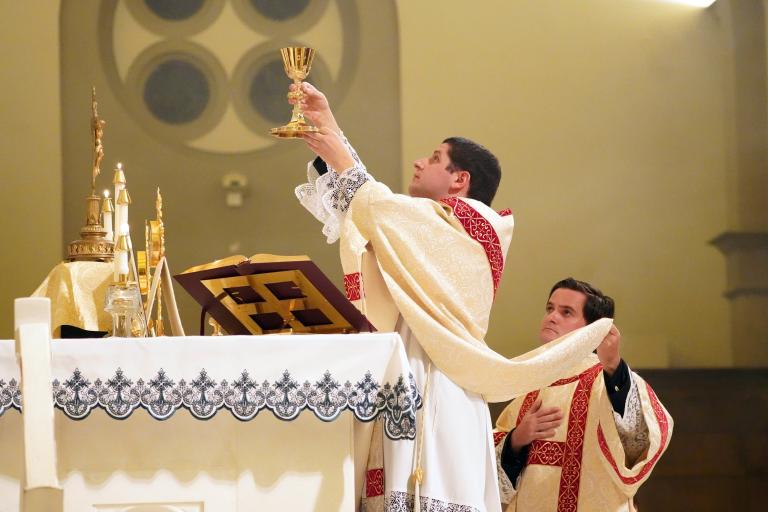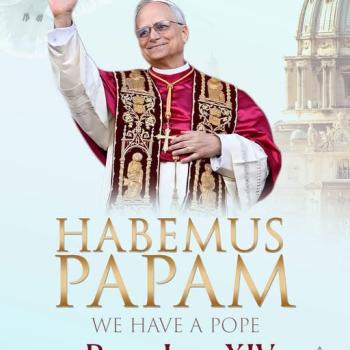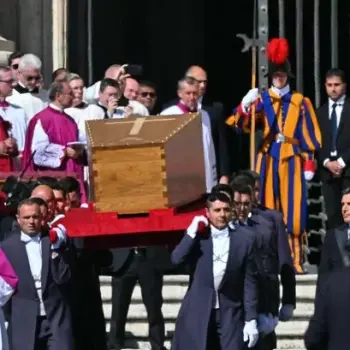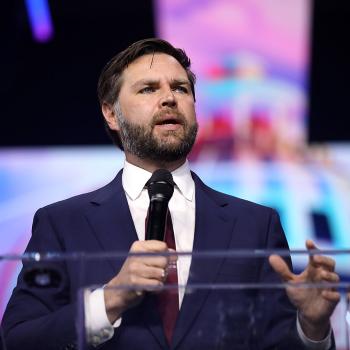
This opinion piece will not be tactfully phrased. There have been many essays in the past few days that look at the broader issues of the new motu proprio issued by Pope Francis concerning the traditional Latin Mass trying to balance both positive and negative views. I wanted to write a piece that reflects my experience from the trenches. Perhaps that will help some understand the issues that motivated Francis after he asked for the opinions of bishops from around the world on how the traditional Latin Mass was faring.
Pope Francis Issues a Document to Reverse Pope Benedict’s Well-Intentioned Attempt to Heal the Perceived Wounds Caused by Liturgical Reform
Back in 2007, when Summorum Pontificum was issued, it looked like the golden days of Tridentine Masses were back. I was Vicar for Clergy in my diocese at the time, and I raised alarm bells with my bishop who also shared my concerns. He was a Latinist, loved that liturgy, but knew there would be problems. I and others were worried that the document would actually cause division and disunity. Too many people who wanted it saw it as the first step to eliminating the Novus Ordo, the Mass in the vernacular established by Pope St. Paul VI. Pope Benedict really wanted his own foray into the controversy to help heal wounds that stemmed from the Vatican II Council’s reform of the liturgy and allow people who had a special affinity for the traditional Latin Mass some relief at their sense of loss of a liturgy that meant so much to them. He was well intentioned, but his effort simply didn’t work. Here’s what happened.
Some Priests Used Summorum Pontificum to Advance Clerlicalism and Elitism.
First, the permissions granted by Summorum Pontificum led to clericalism and elitism. Some younger priests, who had never experienced that liturgy, knew no Latin, nor had anyone to teach them the rubrics, ran and grabbed a biretta and maniple and presented themselves as ready to celebrate the Eucharist with a liturgy they knew little about. They liked the garments, the smells and bells, and the mystery they felt surrounded that form of worship. It made them feel strong and powerful and…well…elite. In order to allow them to celebrate the Mass, the bishop had only one requirement. They had to be able to know what they were saying. Every one of them failed that simple test. He didn’t even require them to translate the liturgy; he simply asked them to summarize the content. They could not. Thank God they were not allowed to publicly celebrate the TLM, the Traditional Latin Mass. Clericalism is the overemphasis of the status of a priest with a wish to be placed on a pedestal. Unfortunately, this seemed to be one of the underlying hopes of some who sought to celebrate the TLM.
It is Erroneous to Hold that the TLM is Widely Popular and Growing by Leaps and Bounds
Second, there has been a belief that the TLM is very popular and that sites where it is celebrated are growing by leaps and bounds. It is often heralded as the form of prayer that will save the Church. I’m sorry, but until I see statistics to the contrary, I’m going to call that fake news. We originally had two sites in our diocese where the Institute of Christ the King Sovereign Priest would celebrate that liturgy. One closed down shortly after opening because of lack of attendees. The other is an oratory and consistently gets about 200 people at a Sunday liturgy. That’s it. There are no other celebrations of the TLM in our diocese. Two hundred people consistently want the Latin Mass in a diocese of 400,000 Catholics. That is hardly a groundswell of support and evidence of need.
Radical Traditionalists Use the TLM to Try and Return the Church to its Glory Days
Third, the RadTrads overextended themselves with their criticism and demands. There is a minority of people who are sympathetic to the TLM but do not normally attend that liturgy. They are radical traditionalists that see the Catholic Church limping to extinction because of its love of modernism. It has capitulated to the culture and sowed the seeds of its own demise. The TLM is one hinge of the door that will allow Catholics to return to some semblance of true religion. The RadTrads freely admit that the TLM is superior to the Novus Ordo, the ordinary form for celebrating the liturgy in Roman Catholicism. They despise the pope and his authority and sound very much like the early Lutherans during the Reformation. They may even have lapsed into heresy, creating a form of Gnosticism where they have the secret formula or knowledge that will enervate the Church once again. If only we had communion rails, no communion in the hand, forms of morality more rigid than the teaching of the Catholic Church, pious devotions that eclipse the study of Scriptures, a much more solid emphasis on Fatima and its promises, as well as an apocalyptic outlook that heralds great punishment for sinners because of the evils of this world, etc., the Catholic Church would rise from its corruption and once again take its rightful place in the world. Enveloping these views is the TLM, the support of which is the badge of credibility a true Catholic must wear. Priests are very familiar with the elitism of the RadTrads who snarl at our attempts to serve the supposedly less informed Catholics of the parish instead of bowing to RadTrad demands.
Why People With no Lived Experience of the TLM See It as the Launchpad of a New Reform
Now, obviously, not everyone who supports the TLM is like this, but one has to ask why a liturgy that most Catholics now alive never grew up with, said in a language they do not understand, captures their imagination and serves to anchor their Catholic faith. The answer many give back is that the TLM restores the mystery and grandeur of the liturgy. That’s fake news too. The older folks who did grow up with the TLM have many stories about how sloppily it was often done, with little understanding from either the priest or people. Most folks simply prayed their rosary or said other prayers while they attended a Mass they really didn’t comprehend. There was a reason why Vatican II called for a reform of the liturgy. The Council Fathers knew that the TLM was failing the salient point of liturgy; namely, giving the people a chance to worship God with understanding and knowledge. The mystery the liturgy should cause ought to lift people to the heights of heaven, not befuddle their minds because of a language they cannot understand.
Pope Francis Issues Traditionis Custodes to Fight the Disunity and Divisiveness Caused by an Inapproriate Use of the TLM
So Pope Francis issues Traditionis Custodes, a document which basically revokes much of Summorum Pontificum. The outcry has been immense, the majority of it critical. But don’t be fooled by that. His decision is one that popes must often make for the good of the people. He saw the disunity, the division, the growing controversies and decided that a new approach must be attempted. The TLM is not going to be a parallel rite with the ordinary form of the Mass. There will still be times it will be celebrated, but it will never be the hinge upon which the catholicity of the Church swings. That outrages some people and the opprobrium cast upon the pope simply shows where the allegiance of these people lies. It is not with the teaching of the Church nor the respect that should be shown to the successor of St. Peter.
Will there be a schism? Will some leave the Church over this? Possibly. But no real Catholic deprives the Pope of his authority to regulate the liturgy and worship of the people. It’s why we have popes. It is what popes do. Kudos to Pope Francis for understanding the need of the Church to fully embrace the liturgical reform called for by Vatican II. Thank God we have a pope who has the courage to brave the condemnation of those who put their own needs and wants ahead of what is best for the Church of Jesus Christ.












